Roland SH-4d Update v2.0 Adds Two New Oscillator Models, Pattern Chain, Effects
The Roland SH-4d combines different synthesis types into a single, fun desktop instrument.
[8 May 2025] This surprise update for the Roland SH-4d drops Harmonic and Step Oscillator Models plus pattern chaining, system-level effects and more. Did the SH-4d just get better? (Spoiler alert: yes.)
Roland SH-4d
Roland SH-4d Update v2.0
Although Roland isn’t at Superbooth this year, the company has chosen opening day to surprise release this new update for its SH-4d desktop synth. I was already a big fan of the SH-4d (as the review below spells out), and this update has only made things better.
First off, you get two new oscillator models. The first is Harmonic, which adds an organ-like additive oscillator with drawbars for creating unique harmonic structures. The other is Step, which gives you two oscillators and a step LFO to freak things out.
On the sequencer side, you can now chain patterns together for song-like structures. Additionally, Sub Step lets you nudge notes off-grid for wonky beats and musical phrases.
There are also new system settings that allow the same effects settings to be applied across all of the instrument layers for reverb, chorus and delay.
The download is free and available for all SH-4d owners on the downloads page (link below).
SH-4d is available to buy at Thomann*.

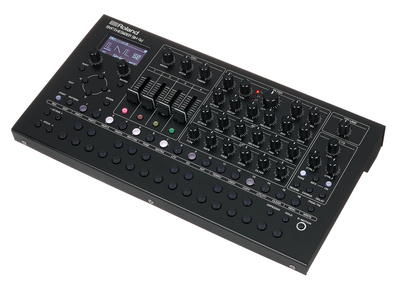
Review: Roland SH-4d – now with a discount!
[21 February 2024] Roland revives the SH line (again) with the brand-new tabletop SH-4d synthesizer. Combining virtual analogue, digital synthesis, sample-based drums and a sequencer in one box, it’s packed with goodies! But, is it worthy of the SH name? And now with a nice discount!
Roland SH-4d on sale with a discount!
[Update: 02/21/2024] Only for a short time you can buy the Roland synthesizer SH-4d here at Thomann shop (affiliate) at a nice price for only 469.00 USD. You can read more information about the synthesizer below in our review.

Roland SH-4d – Standout Features
- Desktop synth
- Virtual Analogue/Digital synthesis engines
- Sample-based drums/rhythm section
- Dedicated MFX effects section for each slot
- Solid build quality
Roland SH-4d
[from February 23, 2023] Last year was a banner year for Roland, with 2022 being the company’s 50th anniversary. However, Roland didn’t release its first synthesizer, the SH-1000, until a year later, making 2023 the 50th synthesizer anniversary. Fitting then that it should choose this year to give us the SH-4d, a brand new, five-part multitimbral tabletop instrument that combines virtual analogue, digital synthesis, sample-based drums and a sequencer into a clean and compact form factor.
Powering the SH-4d is a new, proprietary sound engine. While there may be some similarities to ZEN-Core, particularly in the fact that there are multiple oscillator models at play here (more on these later), this new synth doesn’t integrate into the ZEN-Core ecosystem. Although I suspect it may share some Zen DNA, it should be thought of as a separate entity.

Look And Feel
Most SH synths, from the original SH-1000 to the uber-popular SH-101 and on up to the most recent, Gaia SH-01, have been keyboard instruments. The SH-4d is a desktop machine and so most closely resembles 2002’s SH-32, the outlier of the series. These days, electronic music producers want boxes for their tables, hence the SH-4d’s keyless form factor. This works perfectly for me as I already have more things with keyboards in my studio than I really need but whether this fits into your workflow will be something for you to decide.
There are plenty of hands-on controls, with knobs for the filter, amp, LFO and effects sections. The oscillator area is special, however, with four mixer-style sliders and buttons complementing the three knobs. Below the synthesis area is a row of LED-lit buttons for the step sequencer and additional parameters, the latter accessible with a shift button. Lastly, there’s an array of buttons across the bottom in the shape of a two-octave keyboard, which is more fun to play than expected. You can, of course, also use an external MIDI controller. An easily visible graphic LCD display completes the front panel.
The SH-4d looks dead cool, with a minimalistic, almost industrial black-and-white design that is miles smarter than many of their recent synths. It appears to have taken some design cues from the Jupiter-X and Xm although with much less colour. You’ll find the same high-quality knobs and buttons as those synths too, with a smooth metal face plate atop a plastic body. There’s a satisfying weight to it though and it doesn’t feel cheap in any way.
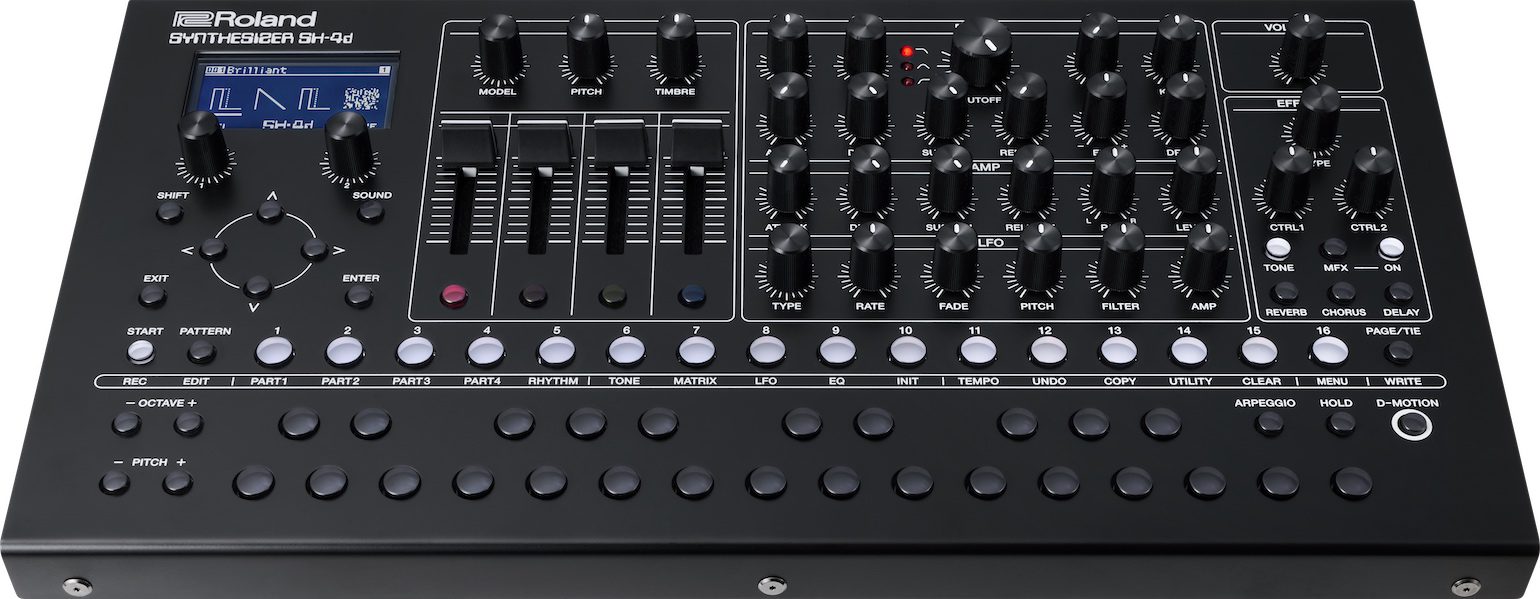
Making Connections
Solid build quality continues around the back, with quarter-inch stereo outputs and a headphone jack. There’s a mini jack for audio in (transmitted directly through to the output and not through the filter or effects, sadly) plus another mini jack for taking an external clock pulse. For the old-school producer, there are five-pin MIDI ports, both in and out, with a soft thru option configurable in the settings. Power is supplied by four AA batteries or USB-C, which can also transmit MIDI and audio. There’s no other power supply.

A Multitude of Oscillators
Rather than having just a single oscillator type, the SH-4d instead allows you to select one of 11 different oscillator models for each of the four synthesizers. These include both virtual analogue sound generators as well as traditional digital ones. Much like the MiniFreak, these then pass through filters and an amplifier, although the filter here is digital and not analogue.
Top of the oscillator list is the titular SH-4d model, a four-oscillator construction with various waveforms to mix and match. These include all the usual suspects (sine, sawtooth) plus some of Roland’s greatest hits like supersaw and the modulated sawtooth from the Alpha Juno. Nice.
Next is the SH-3. This a duplicate of the SH-4d model but it replaces one of the oscillators with an LFO. Given that there’s (frustratingly) only a single LFO in the main synthesis section, this is welcome indeed.
Rather than having oscillator sync as a general function, Roland has opted to make Sync its own oscillator model. This virtual analogue oscillator includes a dedicated pitch envelope. They’ve done a similar thing with ring modulation, with a specified Ring model, and chords with Chord.
Analogue Emulations
As it’s done with other recent synths, Roland has also included two popular analogue emulation models. Both the SH-101 and Juno-106 get their oscillators recreated here.
Interestingly, Roland has packed in a whole host of digital oscillator models, including Cross FM (a two-operator FM synth), Wavetable with modulatable wavetable position, a model called Drawing that lets you (you guessed it) draw out your own waveform, plus a small selection of stackable PCM waves.
Lastly, there’s the rhythm part, which is organized into kits of sampled waveforms. More than just an afterthought, the drum section offers north of 480 waveforms, which you can double up, affect with a pitch envelope, and then pass through the filter and amp sections. While it would have been nice to see the FM percussion engine from the TR-8S included, the sample-based system is fairly flexible already.
Working With Oscillators
With such a variety of oscillator engines on hand, Roland has done a commendable job creating an intuitive and adaptable interface for working with them all. When you select an oscillator with the Model knob, the display changes, with pertinent information illustrated graphically. You can make adjustments using the two main parameter knobs plus the sliders, knobs and buttons in the oscillator section, whose functions change depending on the loaded model. It’s all very elegant and goes a long way towards making the SH-4d such a joy to use.
Note that while the SH-4d is multitimbral, there doesn’t seem to be a way to stack all of the tone levels and play them simultaneously like with the Jupiter-X or Juno-X. Think of it as four synths in a box rather than a single, super synth.
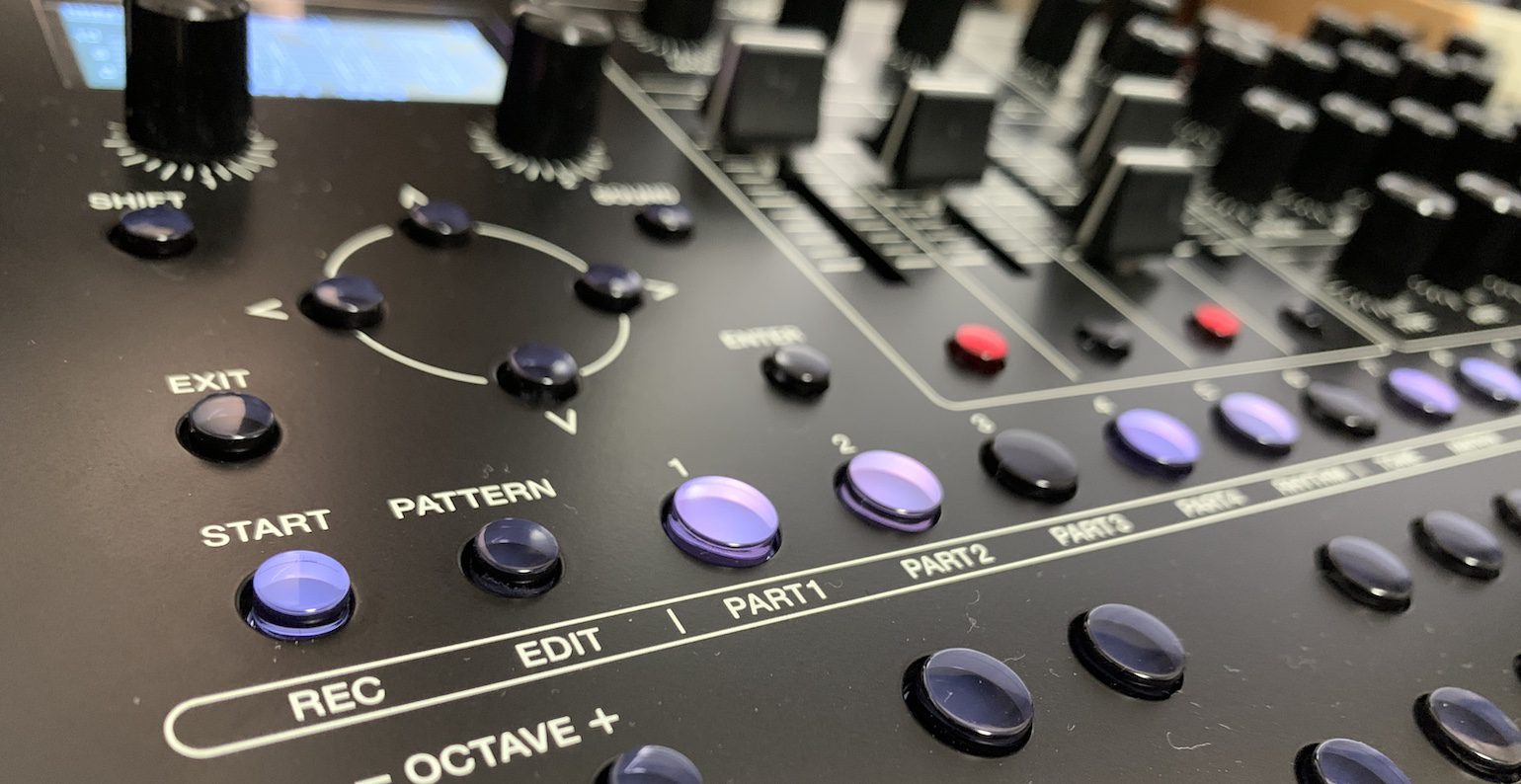
Synthesis Signal Path
Once the sound leaves the oscillator section, it passes through the digital filter. In traditional Roland fashion, this includes a dedicated, non-resonant -6dB/Octave highpass filter, and then a resonant multimode filter, with -24dB/Oct lowpass, -12dB/Oct bandpass, and -24db/Oct highpass options. The filter is solid-sounding, with a smoothness that works well across all the oscillator types. For a little more power, there’s a drive circuit for extra oomph. The filter also has a dedicated ADSR envelope, which is always nice to have.
Next comes the amplifier, with ADSR envelope plus pan and level amounts. As mentioned before, there’s only one LFO, although it does offer a variety of shapes, plus a Fade knob for delaying its start. LFO can be sent to pitch, filter and amp. Additional modulation routings can be made with the mod matrix, which changes accordingly depending on the oscillator model. It would have been nice to have a few more LFOs and another envelope at this stage though.
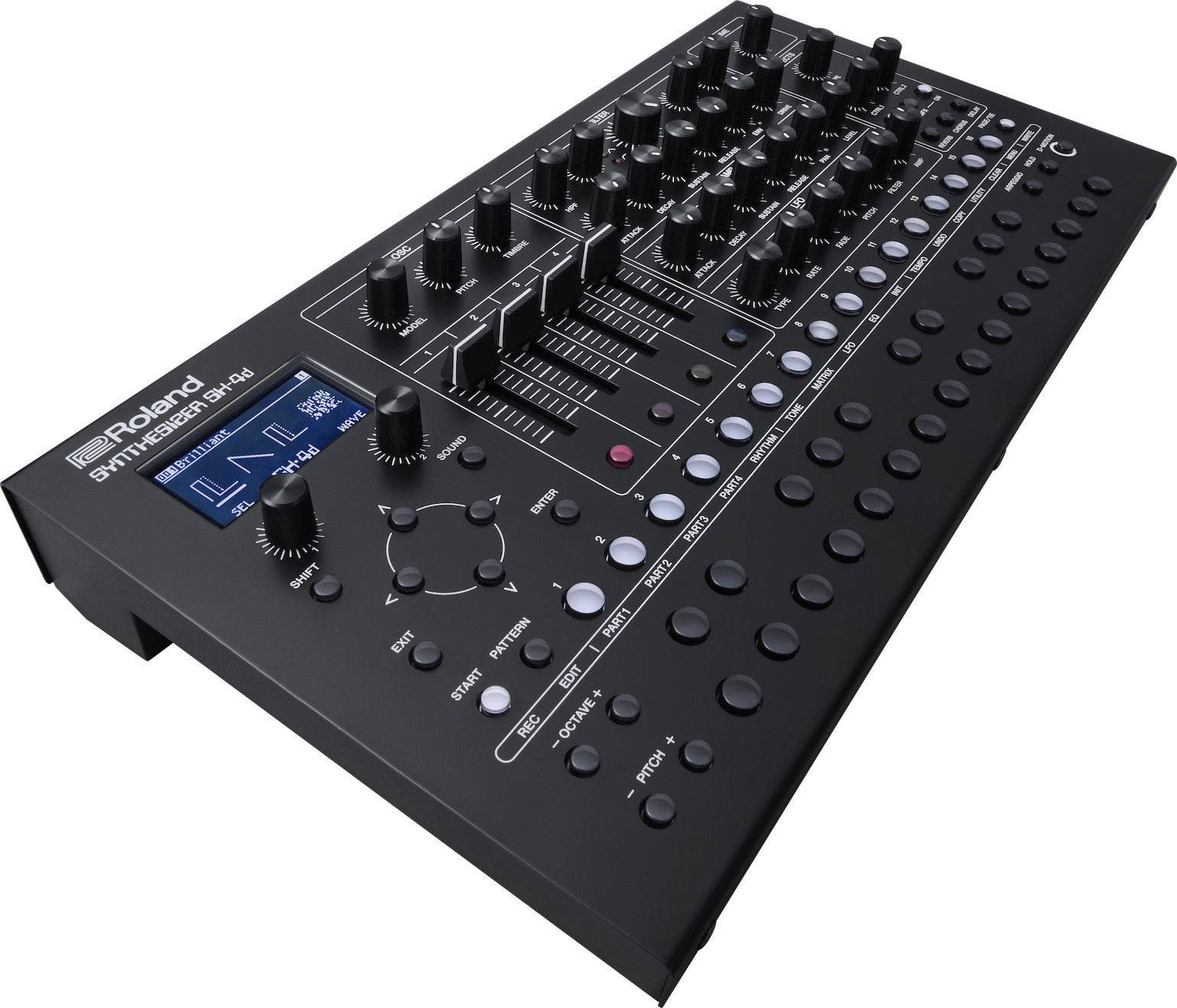
Effects In Effects
You want effects? You’ve got them. There’s an MFX slot for each tone and rhythm section. Going up, the pattern level has a chorus, delay and reverb, plus another MFX slot. If you’re unfamiliar with MFX, it’s Roland’s package of 93 effects, with just about every possible example, from EQ to multis, you could want.
Speaking of EQ, there’s also one for each tone and rhythm instrument, plus an overall system EQ at the end. Throw in a global compressor and this all adds up to some serious tone-shaping possibilities.
Don’t Call It A Groovebox
With the sequencer occupying the top level of the OS, you’d imagine that the sequencer section would be pretty robust. Yes and no. There’s plenty of fun to be had, for sure. You can record sequences up to 64 steps long and input notes via steps or live. It supports probability and ratcheting, making it a solid choice for Berlin School-type jams. You can also record your knob twiddles live or per step.
With four synthesizer lanes plus a rhythm section, you’d be forgiven for thinking of this as a groovebox. So is it? You could certainly use it as such, but without pattern chaining or a song mode, the SH-4d is more geared towards jamming and live performance than song creation. This continues with the arpeggio. Although it’s not a “smart” one like on the recent X instruments, it’s far from dumb as well, with five types plus loads of configurability.

Playful Fun
You might not know it by looking at the workmanlike layout and classic design aesthetics, but the SH-4d has a playful side. Hidden in the main menu is the Visual Arpeggio. Essentially Easter eggs, these offer a variety of scenarios that turn the SH-4d into a game console. Fancy an old-school game of Pong? Wish you could use a synth like an Etch-A-Sketch? Now you can.
More useful, perhaps, is the D-Motion function. Readers of a certain age will remember Roland’s D-Beam controller, where you wave your hand over an infrared beam of light to control synth parameters. D-Motion is similar but instead of waving your hand, you wave the entire instrument itself around in the air, with internal motion sensors reacting to movement. Shake it like a Polaroid picture but don’t lose your grip!
Is The SH-4d For You?
I’m primarily an electronic music producer so after playing with the SH-4d for just a short time, I was hooked. Much like the Juno-X, the sounds, the presets, the focus is on electronic music. Techno pioneer Carl Craig even appears in some promotional materials for the SH-4d. If you don’t techno for an answer then it might not be the instrument for you.
Or maybe it could be. Presets don’t make or break an instrument. And there’s plenty here for even the non-dance music producer to love. With its huge variety of oscillator types, ease of use, and gorgeous sound, it’s sure to find plenty of fans both inside and outside the dance club. It’s also fairly affordable.
If you like to jam DAWless, appreciate a variety of sound types, and don’t need another set of keys, this is the box for you. Just be sure and get a pair of fingerless driving gloves for working with the D-Motion.
Price and availability
You can order Roland’s SH-4d now from Thomann* for 599.00 Euros.


More information about the Roland SH-4d
Videos about the synthesiser
One response to “Roland SH-4d Update v2.0 Adds Two New Oscillator Models, Pattern Chain, Effects”
 4,1 / 5,0 |
4,1 / 5,0 | 






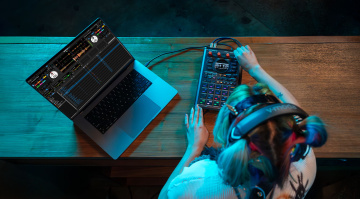
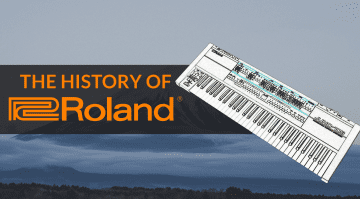

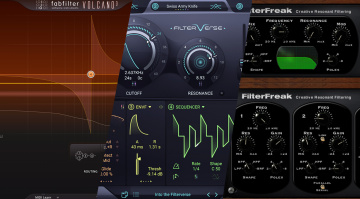

Looks like the analog 70s sh series. Sound like a digital toy.